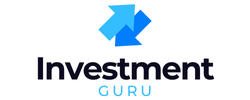Debt can feel like a heavy chain holding you back from financial freedom. For many, traditional repayment strategies aren’t enough—interest piles up faster than payments can reduce it. That’s where companies like Freedom Debt Relief step in.
In this Freedom Debt Relief review, we’ll break down how the program works, its benefits, drawbacks, costs, and whether it’s the right choice for your financial situation in 2025.
Table of Contents
How Freedom Debt Relief Works
Freedom Debt Relief (FDR) specializes in debt settlement, not consolidation or management. Here’s how the process works:
- Free Consultation – You discuss your debts with a consultant.
- Enrollment – If eligible, you stop paying creditors directly and instead deposit monthly funds into a dedicated account.
- Negotiation – FDR negotiates with creditors to settle for less than the total owed.
- Settlement – Once enough funds are saved, debts are settled one by one.
- Completion – After all settlements are made, you graduate from the program debt-free.
Who Qualifies for Freedom Debt Relief?
Not everyone is eligible. FDR typically works with individuals who:
- Owe $7,500 or more in unsecured debt
- Struggle to keep up with minimum payments
- Are not in active bankruptcy
Unsecured debts (like credit cards and medical bills) qualify, but secured debts (like mortgages or auto loans) usually don’t.
Types of Debt Covered
Freedom Debt Relief helps with:
- Credit card debt
- Personal loans
- Medical bills
- Store credit accounts
- Private student loans (case by case)
They do not cover secured debts, taxes, or federal student loans.
Program Length and Timeline
The typical program lasts 24–48 months. However, results vary depending on:
- Total debt amount
- Monthly contribution size
- Creditor cooperation
Some clients see settlements within the first 6–9 months.
Freedom Debt Relief Fees
FDR charges a 15–25% fee of the total enrolled debt. Fees are only collected once a debt is successfully settled, not upfront.
For example, if you enroll $20,000 in debt and the fee is 20%, you’ll pay $4,000 in fees.
Pros of Freedom Debt Relief

- Proven track record – Over 20 years in business and billions of debt resolved
- No upfront fees – Fees charged only after settlement
- Personalized plans – Based on your debt and financial situation
- Creditor negotiations handled – Less stress for you
- Accredited by AFCC (American Fair Credit Council)
Cons of Freedom Debt Relief
- Credit score impact – Stopping payments damages credit initially
- Not all debts qualify – Secured debts and certain loans excluded
- Program length – Can take years to complete
- Fees can be high – 15–25% of enrolled debt adds up
- Lawsuits possible – Creditors may sue during negotiations
Customer Experience and Reviews
Customer reviews of Freedom Debt Relief are mixed. Many praise the company for negotiating large reductions in debt, while others complain about:
- Lengthy program duration
- Aggressive collection calls during the process
- Credit score damage
Still, thousands of clients credit FDR with helping them achieve debt freedom.
Impact on Credit Score
Because FDR requires you to stop paying creditors directly, your credit score will drop initially. However, once debts are settled, your score can begin to recover.
It’s a short-term hit for long-term gain—but not ideal for those needing good credit soon (e.g., for a mortgage).
Freedom Debt Relief vs. Bankruptcy
- Bankruptcy wipes out most debts but has severe long-term consequences on credit.
- Freedom Debt Relief helps settle debts without bankruptcy, but credit is still negatively impacted.
For many, debt settlement is a less drastic alternative.
Freedom Debt Relief vs. Debt Consolidation
- Debt consolidation combines debts into one loan, often with lower interest.
- Debt settlement (FDR) reduces the principal owed but harms credit more severely.
If you qualify for a low-interest loan, consolidation may be a better option.
Freedom Debt Relief vs. DIY Debt Settlement
You can negotiate with creditors yourself, but it’s stressful and time-consuming. FDR has professional negotiators and established relationships with creditors, giving them an advantage.
Transparency and Trustworthiness
FDR is accredited by the AFCC and is FTC-compliant, which adds credibility. The company has resolved over $15 billion in debt since its founding in 2002.
Is Freedom Debt Relief Legit?
Yes. Freedom Debt Relief is a legitimate company with 20+ years of experience. While not a quick fix, it has helped hundreds of thousands of people resolve debt.
Success Stories and Case Studies

Some clients report settling debts for 50% less than owed, including fees. Others claim they saved tens of thousands of dollars. However, results vary, and some creditors may refuse to settle.
Complaints and Common Issues
Common complaints include:
- Aggressive collection calls during program
- Unexpected tax implications (forgiven debt may be taxable)
- Program taking longer than expected
Freedom Debt Relief Mobile App
FDR offers a mobile app to:
- Track settlements
- Monitor progress
- Manage deposits
It helps users stay informed throughout the program.
Alternatives to Freedom Debt Relief
Other well-known debt relief companies include:
- National Debt Relief
- Accredited Debt Relief
- CuraDebt
- DIY credit counseling agencies
It’s wise to compare options before committing.
Tips Before Signing Up
- Check your state laws (not all states allow debt settlement)
- Consider the impact on your credit score
- Get all terms in writing
- Compare multiple debt relief companies
Best for Whom?
Freedom Debt Relief is best for people who:
- Have $7,500+ in unsecured debt
- Cannot keep up with minimum payments
- Are willing to accept a credit score drop in exchange for debt relief
FAQs
Is Freedom Debt Relief legit or a scam?
It’s legitimate, accredited, and has been operating since 2002.
How much debt do I need to qualify?
At least $7,500 in unsecured debt.
Will Freedom Debt Relief hurt my credit?
Yes, initially, but credit can recover over time.
Does Freedom Debt Relief charge upfront fees?
No, fees are only charged after a successful settlement.
Can I still be sued while in the program?
Yes, creditors may pursue legal action, though FDR will continue negotiations.
How long does it take to complete the program?
Typically 2–4 years, depending on debt and payments.
Conclusion
Freedom Debt Relief isn’t for everyone, but for those drowning in unsecured debt with no clear path forward, it can be a lifeline. While your credit score will take an initial hit and fees can be high, many find that the long-term relief outweighs the short-term sacrifices.
If you’re struggling to keep up with payments and want an alternative to bankruptcy, Freedom Debt Relief may be the right solution to finally break free from debt.
External Source Suggestions:


